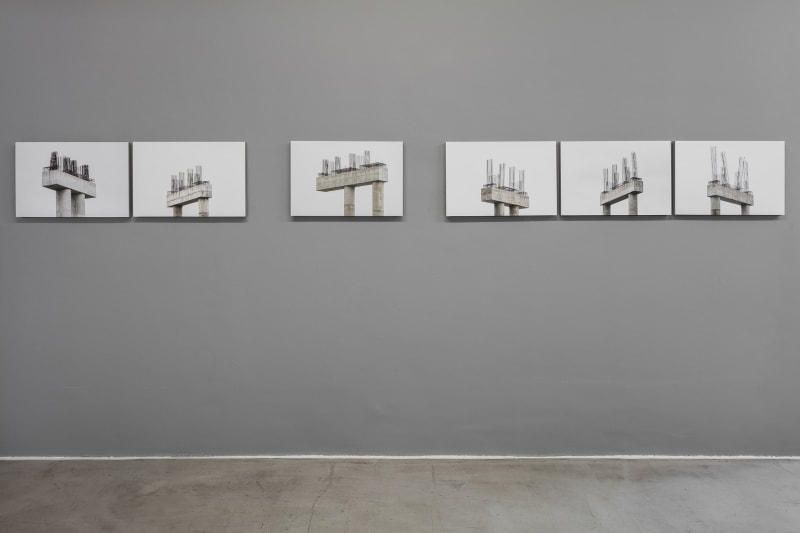Ephemeral Archaeologies
It is important to briefly exercise our imagination when looking at the concrete structures and metallic beams that serially reappear in Ivan Padovani's photographs. Which stores could we tell from these buildings if we came across them a thousand years from now? If a city's constructions and layouts are also material documents of a civilization, what kind of testimony would these urban skeletons, frozen in time, reveal? Would they be unfinished or partly destroyed, as the rust marks running down the concrete indicate? Would their monumental nature be merely an intention without a purpose, or were they built to actually celebrate something, ending up as involuntary monuments to nothing?
There is a permanent state of suspension in these images. Like portals in time, they seem to announce the overture to a new, still unknown phase. The future is imposing, ambitious, promising, but it still hasn't arrived and we do not know when it will come. Meanwhile, we remain in a present that repeats itself in the shape of boring concrete beams, side by side, under the same monochromatic sky with very few variations of the color gray.
Seeking ephemeral archaeologies in a city that produces its memories not reflecting upon what it will save for the future is an important part of the artist's creative process. In this new series, he spent two years (2015-17) following a series of infrastructure works throughout São Paulo that had been suspended during that period. The unfinished developments, though photographed in different places, always look the same - removing all other details from the images' composition enhances this aspect. The city is never seen in its entirety, but only as dismembered parts, in apparently generic records of nowhere, if not for the very familiar vestiges that denounce the urban landscape of São Paulo.
The repetition of this dismemberment is also related to the series and the exhibition title. In Return of the Real (1996), Hal Foster, an American art critic, developed the concept of "traumatic realism" based on Lacan's notion of trauma - which understands repetition as the only way to access a reality that never was; an attempt to remove any and all meaning from images until they become completely empty.
In the sequence seen on the very first wall, Ivan presents the same image five-fold. For a moment, we see the scars and layers that drip down the concrete block trying to find the slightest difference between each image, any detail that reveals any sort of progression or continuity of the scene, which could be infinitely repeated. The same doubt is experienced in other times, but in the opposite manner: structures that look alike, photographed from different angles, that in reality are completely distinct, even though appearing to be very similar to the others.
"No special form of city blight is nearly so devastating as the Great Blight of Dullness", Jane Jacobs wrote in The Death and Life of Great American Cities (1961), one of the greatest critiques to the modernist orthodox urban plan. The author uses New York as an example to fight projects that wanted to adjust the city to the molds of what was seen, at that time, as a "great city", with bridges and expressways crossing through entire neighborhoods. Many of these ideas tardily contaminated São Paulo after the 1970's.
Ivan Padovani's images carry a little bit of the dullness that Jacobs described, in which the lack of urban diversity leads to the bleak collapse of a city. And so, only its involuntary monuments remain, seen by no one.
Nathalia Lavigne

